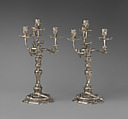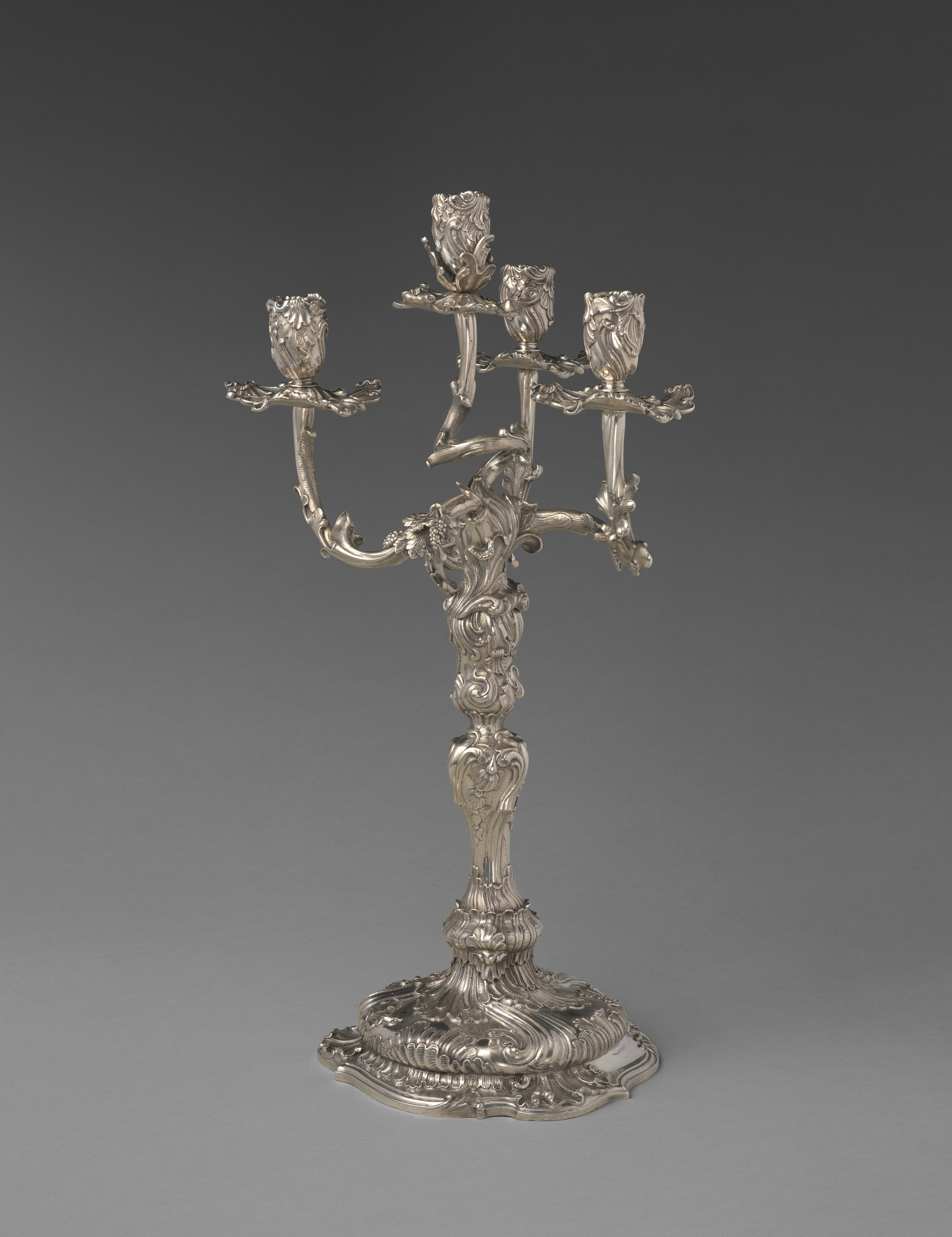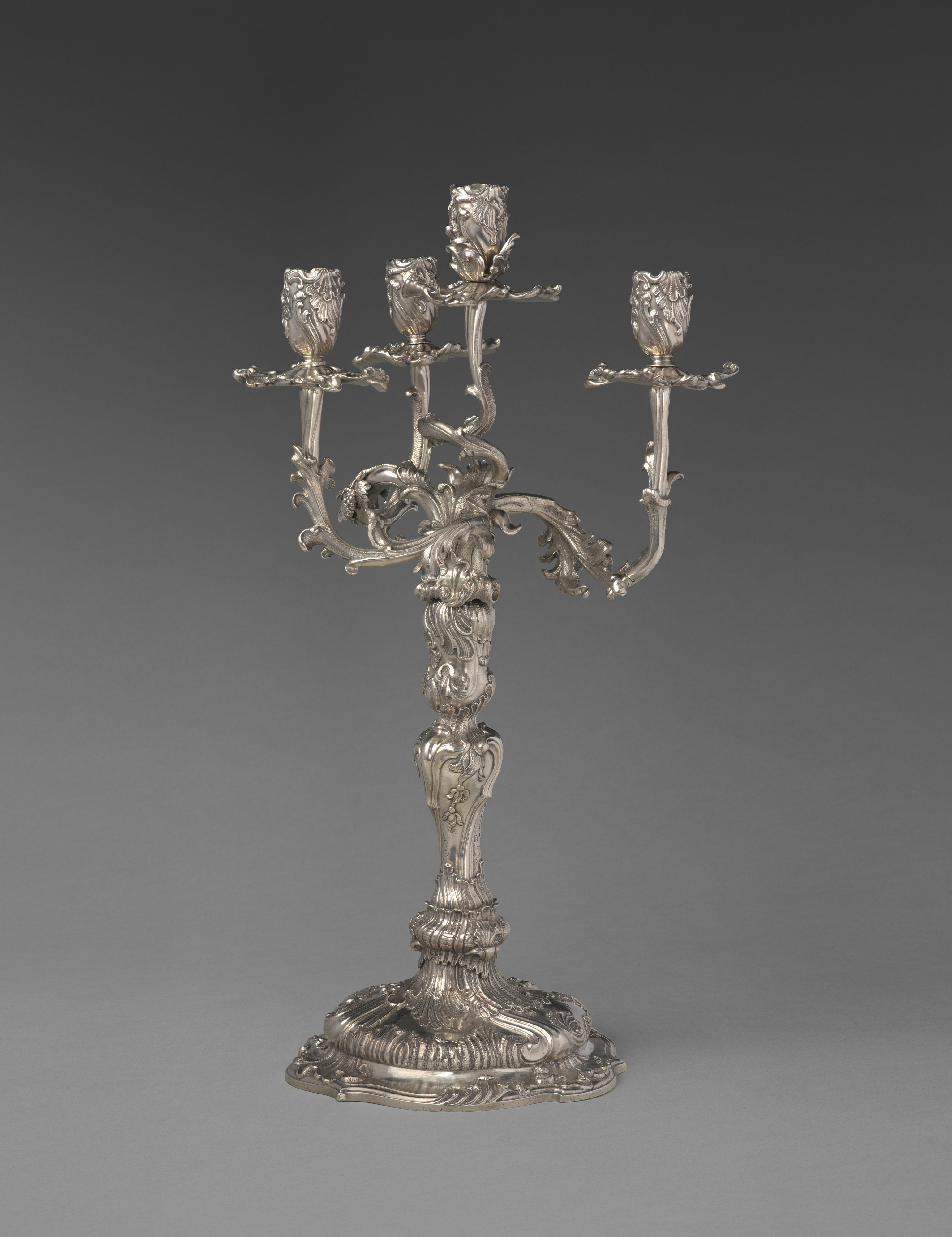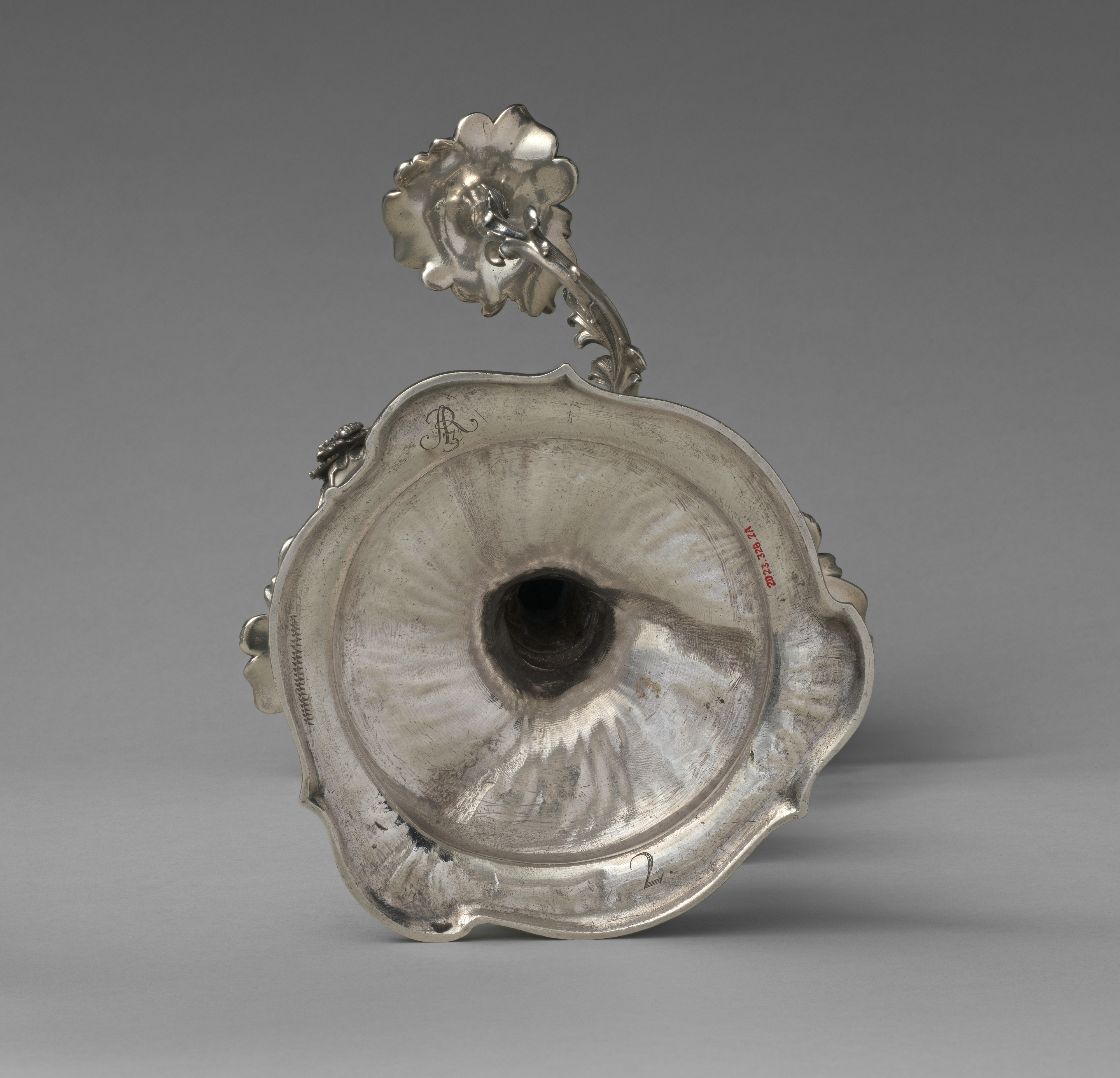Pair of royal German silver four-light candelabra
Christian Heinrich Ingermann German
These two extraordinary candelabra are the first and second made for an ensemble of 36 candelabra and 100 candlesticks made for Frederick Augustus II, Elector of Saxony and as August III, King of Poland (1696–1763). As the first in the set, they were likely the prototypes shown for approval to the royal patron and his prime minister Heinrich Count von Brühl (1700–1763), who initiated the costly project. The goldsmith invested significantly in the commission, transforming the raw precious metal into works of great subtlety and power with virtuoso surface finishes and fine detail. Christian Heinrich Ingermann (1713–1778) was a leading artist of the Dresden court, and these candelabra exemplify the high caliber of his fashionable production. Applied across media, this Dresden iteration of the Rococo was an exuberant adaptation of the French style, heavy in naturalistic ornamental vocabulary like the delicate foliage on the four twisted branches of these candelabra and the dynamic tension of their composition. When united, the gleaming service of over 130 candleholders would have illuminated the Royal table, an impressive display both of stylish Saxon taste and of wealth in silver.
Due to rights restrictions, this image cannot be enlarged, viewed at full screen, or downloaded.
This artwork is meant to be viewed from right to left. Scroll left to view more.





